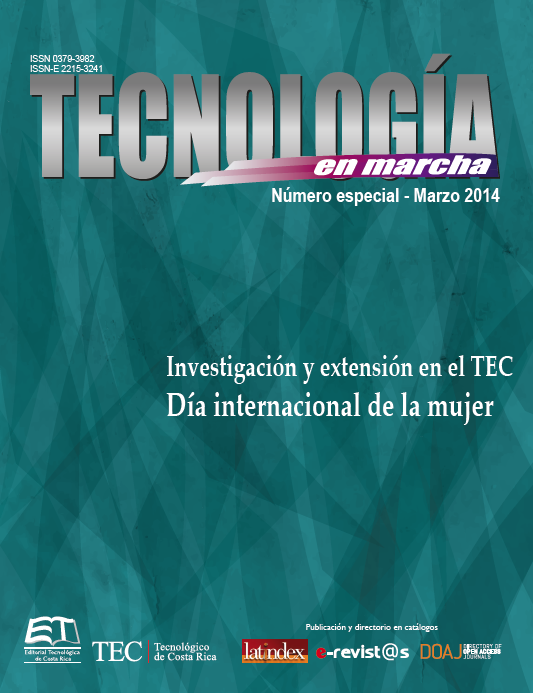Comparison of pesticides dermal exposure methods in a sample of flowers, palm hearts and chayote producers in Costa Rica
Main Article Content
Abstract
Costa Rica exports a wide variety of agricultural products such as chayote, palm hearts, flowers and ferns. Different methods are used for pest control, including chemical based pesticides, even though they could be damaging the farmer’s health. This exploratory study, aimed to compare, in a sample of farmers from each of these crops, three different techniques for dermal exposure assessment: the algorithm quantitative approach method (AQAM), fluorescent tracer and dermal patches. From the algorithmic the intensity levels of exposure were obtained, with fluorescent tracer technique (FTT), deposition of pesticides on workers skin was estimated during application and with absorbent patches the amount of selected pesticides was quantified according to WHO protocol. The AQAM estimated exposure conditions up to eight times higher compared to the reference level (calculated from safe working conditions for each crop). The FTT showed average percentages of body exposure in flowers and ferns of 13% (2,4 – 36,3%) for chayote 24,8% (5,9 -5,.6%) and palm hearts 21% (19-31%). Highest fluorescent tracer deposition body segment were hands (50-68%), although forearms and neck, showed important percentages. Applicators wearing gloves presented fluorescent depositions significantly lower than those not using protection. Significant association of the fluorescent deposition and intensity level per employee was found for flowers and palm hearts using a Spearman correlation (R= 0.86 and -0.73). The AQAM is not applicable to all types of crops since variations within could lead to exposure sub-estimation. It`s necessary to generate our own low-cost tools to assess exposure in the agricultural sector.
Article Details
Los autores conservan los derechos de autor y ceden a la revista el derecho de la primera publicación y pueda editarlo, reproducirlo, distribuirlo, exhibirlo y comunicarlo en el país y en el extranjero mediante medios impresos y electrónicos. Asimismo, asumen el compromiso sobre cualquier litigio o reclamación relacionada con derechos de propiedad intelectual, exonerando de responsabilidad a la Editorial Tecnológica de Costa Rica. Además, se establece que los autores pueden realizar otros acuerdos contractuales independientes y adicionales para la distribución no exclusiva de la versión del artículo publicado en esta revista (p. ej., incluirlo en un repositorio institucional o publicarlo en un libro) siempre que indiquen claramente que el trabajo se publicó por primera vez en esta revista.

